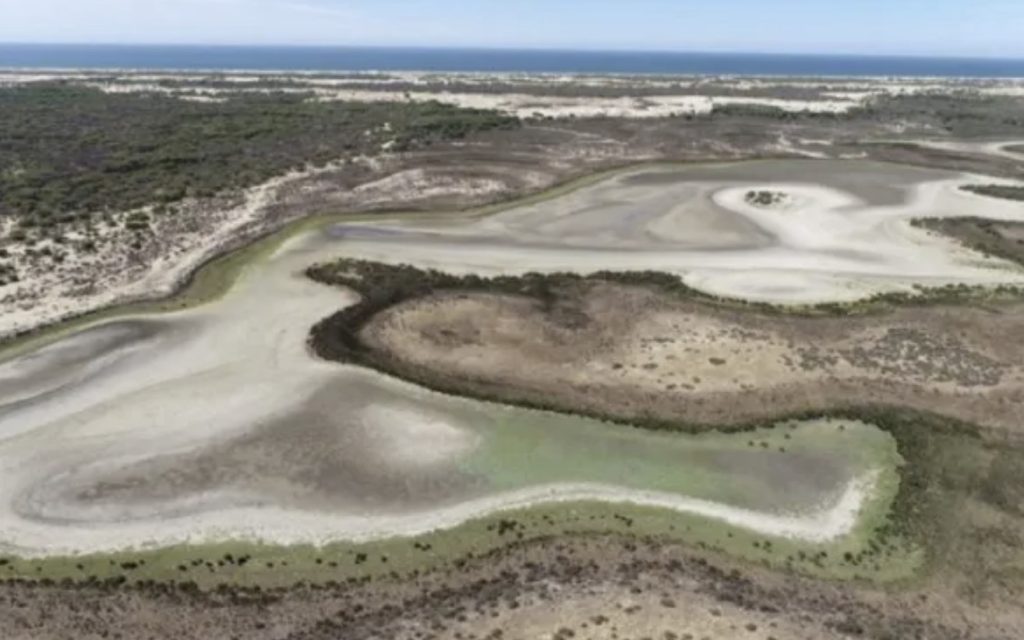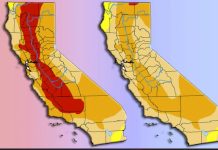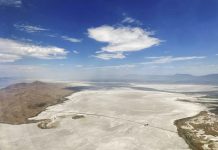The Santa Olalla Lagoon, the largest permanent lagoon in Andalucia’s Doñana Natural Park, the last to contain water in August, has now also dried up. What remains is a small puddle in the middle, where no waterfowl flock anymore.

The Spanish National Research Council (CSIC) reported this in a statement on Saturday. The scientific bureau points out that this is the third time since the Doñana-CSIC Biological Station started recording data on the nature reserve in the 1970s.
Protect your home and cars againts EMP, solar flare and lightnings…
The CSIC stresses that Doñana has traditionally been a refuge for fauna and has an important system of lagoons. Only a few of these contain water in summer and they are a refuge for the first waders to migrate south after breeding in northern Europe. They are also the habitat of many strictly aquatic species of flora and fauna.
The same applies to the rice fields. But things have changed. Doñana no longer has permanent lagoons, while the area of rice fields planted this year is a third of normal due to the lack of water, explained the director of the Doñana-CSIC Biological Station, Eloy Revilla.
You will never go without electricity with this portable power station!
An intense period of drought
The CSIC explains that the drought in Europe, which is particularly intense on the Iberian Peninsula, is wreaking havoc on the nature reserve, but warns that the most worrying thing is that this has been going on for a long time.
It has not rained normally for years. Rainfall in Doñana has been below average for 10 years in a row, says Revilla. Wetlands and the species that depend on them, such as waterfowl, are particularly affected and forced to move in search of areas where water remains available during the most difficult periods of the dry season.
The Santa Olalla Lagoon is the only one with permanent water in a chain of large lagoons that form in the lee of the impressive chain of dunes that separate the marsh from the Atlantic Ocean. Their origin lies in the discharge of water from the Doñana aquifer into this area, which causes an explosion of life.
These and other natural values have, according to the CSIC, earned Doñana the status of national park and biosphere reserve. Continuous exploitation through intensive agriculture and abstraction for human consumption, even in such dry years as this, has led not only to the disappearance of the temporary lagoons from Doñana, but also to the threat to the permanent ones.
Over-exploitation and third time completely dry
The CSIC adds that the lagoons are known to be particularly affected by the water abstraction of the population of the resort of Matalascañas, which exponentially increases its water consumption in the summer due to the arrival of tens of thousands of tourists, increasing the population from a few thousand to around 100,000. The effect on the lagoons is immense.
Drink SAFE water at home. That’s the best filter around…
Third time
‘This is the third time the Santa Olalla lagoon has dried up completely since we have data. It also happened in 1983 and 1995, in both cases coinciding with periods of intense drought,’ Eloy Revilla explained.
For years, more water has been withdrawn from it than replenished when it rains. The Infraestructura Científica Tecnológica y Singular – Reserva Biológica de Doñana, part of the Estación Biológica de Doñana CSIC – has installed a surveillance camera in the lagoon to monitor its development in the coming days.
Stock up on Iodine tablets for the next nuclear disaster…
On 31 August, Santa Olalla was dry, parched and cracked, reduced to a small pool of water and mud. Given the serious situation facing the Santa Olalla lagoon, the director of the Doñana-CSIC Biological Station is calling for accelerated action to end the extraction of groundwater from Matalascañas.
In the meantime, to impose restrictions on the use of water for urbanisation, at least in years when the lagoons are in such an extreme situation as this. ‘It cannot be that while the lawns of Matalascañas continue to be irrigated, the lagoons of Doñana dry up completely,’ Eloy Revilla concluded. [CSIC, in Spain, El Pais]














Too many tourists so the water resources dwindle, and the animals suffer. Now the people will suffer. Tourism will dwindle, and then people will dwindle away.